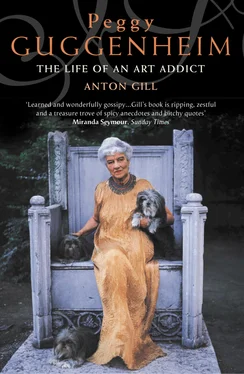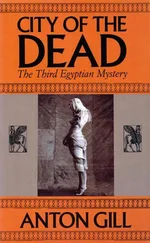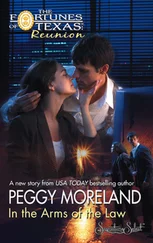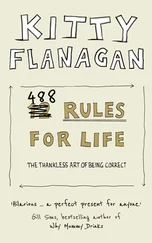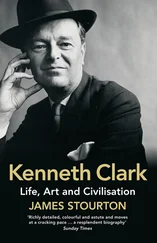Peggy was not the only member of the American artistic circle in Paris who was not herself an artist; many others used their money to encourage and subsidise creative but impecunious talents. Though hardly a champion of the avant-garde – she favoured the arts of the belle époque – Natalie Clifford Barney had inherited $3.5 million from her father and in 1909, when she was thirty-three, bought number 20, rue Jacob, a vast seventeenth-century mansion in which she lived very stylishly for the next half-century. As an early arrival she, like Gertrude Stein, was able to make contacts within the French cultural arena, though her house became a specialised centre for lesbian culture – Natalie had known she was a lesbian since the age of twelve, and she is the original for Valerie Seymour in Radclyffe Hall’s The Well of Loneliness , published in 1928. Thrifty like Peggy, she was also a benefactress to Djuna Barnes, though unlike Peggy, she never supplied the novelist with a regular stipend.
Mary Reynolds, one of the circle’s most striking members, was the widow of Matthew Reynolds, killed in 1918 while fighting in France with the US 33rd Infantry Division. She moved to Paris to escape pressure at home to remarry. Her group of friends included Cocteau, Brancusi and the American author and journalist Janet Flanner, who wrote the New Yorker’s ‘Paris Letter’.
Later in the decade the heiress Nancy Cunard founded The Hours Press, which she ran between 1927 and 1931; she was the first person to publish the young Samuel Beckett: Whoroscope appeared in 1930, in a hand-set edition of one hundred, followed by a second edition of two hundred. She also published, among others, Robert Graves, Ezra Pound and Laura Riding. Nancy had acquired her first printing press from William Bird, who ran the Three Mountains Press on the Île St Louis.
Perhaps the Left Bank’s most famous artistic haven was the bookshop Shakespeare and Co., at 12 rue de l’Odéon (it has since moved to rue de la Bûcherie), founded by Sylvia Beach, the daughter of a minister from Princeton, New Jersey, in 1919. In this literary Mecca could often be found Allen Tate, Ezra Pound, Thornton Wilder, Hemingway and, on occasion, the great literary lion of the expatriate community, James Joyce.
It was at the bookshop that Robert McAlmon founded his Contact Editions Press in the early 1920s, the title deriving from William Carlos Williams’ mimeographed poetry magazine, Contact. Early in 1921, in New York, McAlmon married the English novelist ‘Bryher’ – the nom-de-plume (taken from the name of one of the Scilly Isles) of Winifred, the daughter of the vastly wealthy English shipping magnate Sir John Ellerman. McAlmon said he was unaware of Winifred’s true identity (and therefore of her money) until after they were married, but this seems unlikely, since it was from the first a marriage of convenience: both parties were homosexual, but in those days Bryher needed the cover of marriage in order to be able to travel freely and to adopt when necessary a respectable place in society (according to Matthew Josephson she was at odds with her family, though McAlmon was received by her father in London). By marrying, she also made herself eligible to inherit a fortune. The couple scarcely lived together; Bryher was a friend of the Sitwells, and was already involved in a long-term relationship with the more considerable poet and novelist ‘HD’, Hilda Doolittle, a native of Bethlehem, Pennsylvania, who had followed her friend Ezra Pound to Europe in 1911.
While his wife travelled, McAlmon stayed in Paris, drinking too much and indulging in some minor writing and a memoir, later revived by his friend Kay Boyle, of his life and of the artistic life of the time.
McAlmon was a fine editor, with a well-developed sense of what was best in the new writing, and used the money he derived as an ‘income’ from his marriage to set up his small publishing house. Despite personal differences between the two men (McAlmon could be very bitter), he was the first to publish Hemingway, and he also produced volumes of verse by William Carlos Williams, Mina Loy and Marsden Hartley. Though he had dreaded the thought of being destitute once Bryher – as she inevitably did, after about six years – divorced him, he found himself in fact with a handsome settlement of about £14,000, which led his friends Bill Williams and Allan Ross Mcdougall to dub him ‘Robert McAlimony’.
Gertrude Stein, though she stood apart from the 1920s set, having been in Paris since 1903, was among the first great female collectors of modern art. As patrons in America, Katherine Dreier and the Cone sisters were not far behind her. The Cones were distant cousins of Stein, and Etta Cone had typed the manuscript of Stein’s first book, Three Lives. At Stein’s home at 27, rue de Fleurus, crammed with paintings and sculpture, many of the new arrivals rubbed shoulders with the older established expatriates and some of their French colleagues too. Any given salon might include Virgil Thomson, Hemingway, Pound, Duchamp, Cocteau, Picabia, Matisse, T.S. Eliot (on visits from London), Mina Loy, Djuna Barnes and Robert McAlmon. And Picasso, of course, whom Stein’s friend Nelly Jacott called ‘a good-looking boot-black’.
In the early days, Picasso had exhibited his work in a little furniture shop; and Leo and Gertrude Stein had been able to pick up Matisse’s Femme au Chapeau for 500 francs from the dealer Vollard. Things were changing fast, though. Daniel Kahnweiler, the great pioneer modern art dealer, had set up shop in Paris a couple of years before the First World War. Ignoring Picasso’s advice to become a French citizen (he was married to a Frenchwoman but had already done national service in his native Germany and didn’t want to have to go through it a second time, especially with a war looming), Kahnweiler had his effects sequestered at the outbreak of war and all his pictures were auctioned off – notably most of the Cubist work painted between 1911 and 1914. When he returned to Paris soon after the war, his former artists except Juan Gris had become ‘too successful to have need of him’, Stein tells us. Certainly the three other great Cubists, Picasso, Braque and Léger, had begun to be seriously collectable by this time, though the prices asked for their work remained low compared to the levels they subsequently reached.
Hemingway quoted Gertrude Stein, whose family-derived income was comfortable but not great, with a respect born of admiration: ‘ “You can either buy clothes or buy pictures,” she said. “It’s that simple. No one who is not very rich can do both. Pay no attention to your clothes and no attention at all to the mode … and you will have the clothes money to buy pictures.”’ But not all the new arrivals treated Stein with particular reverence. The poet, artist and film-maker Charles Henri Ford called her ‘Sitting Bull’, while John Glassco wrote that she
projected a remarkable power, possibly due to the atmosphere of adulation that surrounded her. A rhomboidal woman dressed in a floor-length gown apparently made of some kind of burlap, she gave the impression of absolute irrefragability; her ankles, almost concealed by the hieratic folds of her dress, were like the pillars of a temple: it was impossible to conceive of her lying down. Her fine close-cropped head was in the style of the late Roman Empire, but unfortunately it merged into broad peasant shoulders without the aesthetic assistance of a neck; her eyes were large and much too piercing. I had a peculiar sense of mingled attraction and repulsion towards her. She awakened in me a feeling of instinctive hostility coupled with a grudging veneration, as if she were a pagan idol in whom I was unable to believe.
Читать дальше
